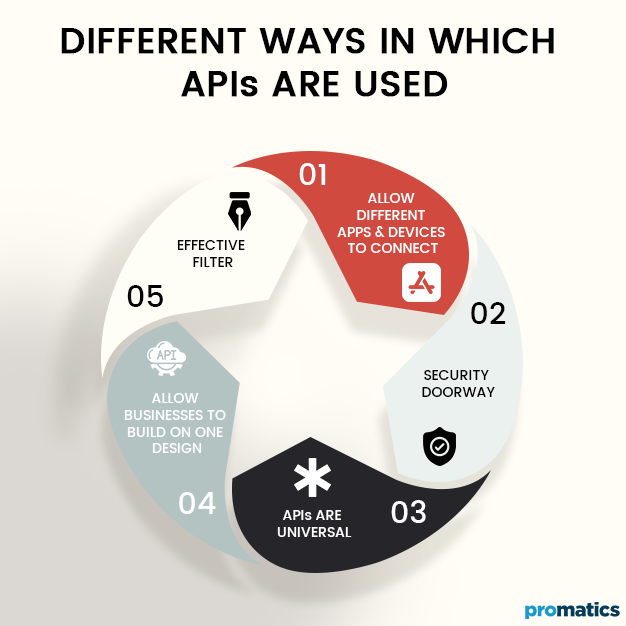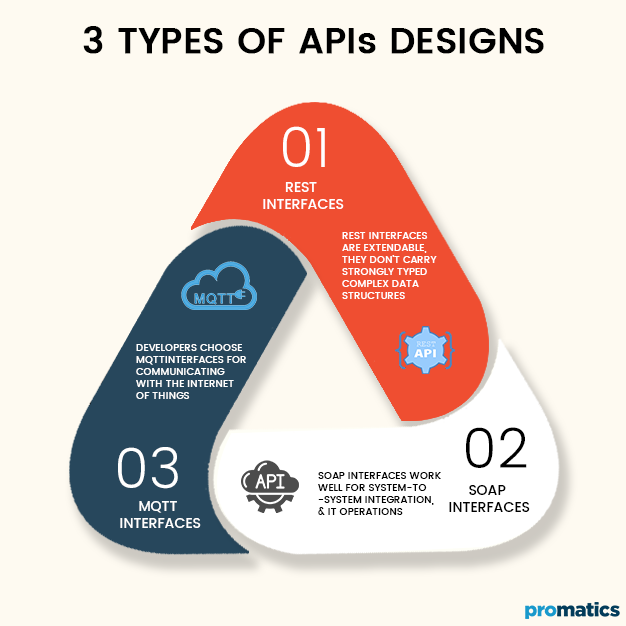API (Application Programming Interface) Guide for Dummies
Introduction
There is a reason for the absolute surge in the popularity of APIs in the world around us. APIs make the solid ground on which cloud technology, mobile tech, and IoT thrive. By definition, API is a set of subroutine definitions, communication protocols, and tools for building software. To begin with, they facilitate speed, ease, and portability of data exchange that, in turn, helps modern innovations. With APIs, various software pieces can collaborate to harness the massive potential for the rapid development of new products and services. To be more precise, API is not the database or the server; in fact, it is the code that governs the access points for the server. By leveraging APIs efficiently, businesses can innovate with ease and reach out to newer audiences too.
Unless an app developer decides to write every single line of code from scratch, they need to leverage external software components, each with its own API. Most commercial sites make a section of their code available for everyday use to allow developers to build tools for their website. This piece of code that they make public is API, and using the system- say tools and widgets they create applications. These host sites benefit from numerous cool features that developers come up with for free. On the other hand, developers get an opportunity to promote their work on a more high profile site, and they also benefit from the cross over traffic.
Thus, Application Programming Interfaces connect applications, enabling communication information sharing between them. APIs never merge or assemble data; instead, these interfaces make it mobile across the connected applications. All in all, they allow all related apps to use data whenever required. In fact, APIs manage what information is shared between each application and how.
Why Budding Businesses Need APIs to be Successful?
If the insane number of APIs available for use confuses you as a user, you are not the only one. It’s important to note that massive upsurge in mobile tech adoption leads to the popularity of the APIs. This is because mobile apps trust APIs to and fro between device and backend systems. The number of APIs is directly proportional to the number of apps on the app store. Further, APIs also serves as the database for responsive websites that excel at UX and leverage IoT.
APIs offer a lightweight implementation and come with a simple data exchange format. Thus, APIs are just the right data channel for mobile and other IoT devices. In fact, it wouldn’t be wrong to view APIs as a small server-side application, which is sometimes used as a microservice. Moreover, APIs can be written in multiple programming languages and can even be hosted on various run times. Since APIs use the HTTP/S transport to serve data to its clients, they are a safety measure that businesses trust.
How are APIs Used?
APIs come with numerous business benefits. Here we discuss some basic ones:
APIs as Security Doorway
Businesses can choose how much of their base code is available as part of the API. With this business gains control, how much information they give people. Thus, API can act as a key to the relevant code.
APIs Allow Different Applications and Devices to Connect
Useful APIs indeed allow for the seamless transfer of data between different applications and devices. Thus, businesses that build apps for various purposes often find it easier to use an API. Not only does it streamline the whole design process, but it also minimizes compatibility issues.
APIs Allow Businesses to Build on One Design
If a business builds one application and has an API in place, it can quickly make another using the same API. This is because APIs allow developers to use one app as a springboard to construct another.
APIs are Universal
As a matter of fact. APIs standardize access to your code. Since people programming apps tend to come from a lot of different backgrounds, speak different languages, and work using various equipment, using the same API brings them in sync.
APIs Can Also be an Effective Filter
With APIs, companies get a chance to allow enough access for development to third-parties without having to share code that could be exploited to cause a security risk. Businesses can share an API and can still retain control over your digital assets.
APIs: Default Format and Design
APIs use JavaScript Serial Objection Notation or JSON as its default format because it is a very compact and highly legible way of presenting data in an implementation. Thus, JSON payloads can be easily analyzed by calling clients with little no performance overhead for new developers. Again, this is a big reason for Api’s popularity. Thanks to JSON, developers can build APIs faster than they can make other web services.
API design process outlines the “what” and the “how” of the API development process. It’s important to note that well-designed APIs have consistent behavior, take context into account, and also keep the needs of their end-users in mind. With the consistency of tone, APIs quickly, and the likelihood of programmers making mistakes when using it decreases too.
What is Good API Design?
In reality, the technical design of APIs depends on the technology choices made. Precisely speaking, there are three main types of API designs:
REST Interfaces
REST interfaces are mostly resource-based. Here the interface design is the URI structure that allows users to navigate the object graph embodied by the API. REST Interfaces work well for human consumption. That is why they are the current preference of mobile developers. Although REST interfaces are extendable, they don’t carry strongly typed complex data structures. They tend to be a bit chatty, though.
SOAP Interfaces
SOAP interfaces are mostly method-based. Here the interface design is the set of supported methods and the data structures of each technique. SOAP interfaces work well for system-to-system integration, and IT operations teams choose them due to their less chatty nature and more precise data structures.
MQTT Interfaces
MQTT Interfaces are mostly event-based. Here the interface design is the set of events (emitted or received) and the associated event messages. Developers choose MQTTinterfaces for communicating with the Internet of Things, where bandwidth and battery life remain the key concerns, and guaranteed delivery may be the difference between preventing accidents and inadvertently letting them happen.
What Does an Ideal API Looks Like to Developers?
Most modern developers intend to use APIs for innovation and experimentation in their products. More than reuse, they value the way APIs speed up the time to deliver, help leverage expediency, and streamline the learning. Developers need APIs that are easy to consume. Thus, APIs that are easy to find and register often become a developer’s favorite. For example here are the best video chat APIs one can integrate in his app or website.
Moreover, developers believe that an API ecosystem needs to be community-centric. With the help of an active API community, developers can find the exact APIs available to them for their current tasks. API communities also allow people to like or dislike a particular API. In addition to that, consumer-centric analytics depict the expected operational behavior of a specific API. Thus, right API management solutions not only add value for API providers by making it easier to create APIs but also improve the control of their runtime behavior.
Conclusion
In the end, it’s only fair to conclude that APIs are a boon for creative, budding developers. Leveraging APIs takes easies complexities involved in the development, extends systems to partners in a seamless fashion, and makes components reusable. The fact remains that APIs are in the app development world today. Consequently, everyone needs to have APIs in their technical toolbox when they deal with programming. Thus, it’s strategic for developers to have at least a basic understanding of what ‘API’ means as it allows more clarity throughout the app development process. We know this article proves to be a useful resource as you deepen your understanding of APIs.
Still have your concerns?
Your concerns are legit, and we know how to deal with them. Hook us up for a discussion, no strings attached, and we will show how we can add value to your operations!

